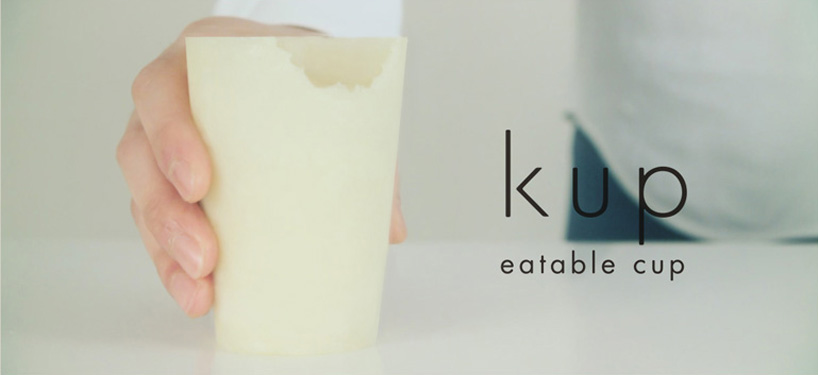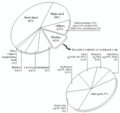Orange unwraps the ‘Sound Charge’: A green T-Shirt that generates power from sound energy
by: Ecofriend, 2011-06-21 04:34:15 UTC
DATTATREYA MANDAL:

Orange Sound ChargeRenewable energy charger concept
We have encountered innovative conceptions ranging from utilizing plentiful solar energy to renewable wind energy, but making use of the more basic and rather novel sound energy has always been the ‘holy grail’ for researchers. But this time in reality, telecommunication giant Orange has announced their advanced version of a mobile charging technology in the form of a prototype called Orange ‘Sound Charge’, at the world famous Glastonbury festival. As the name suggests, the contraption will have the unique ability to charge mobile phones using just sound energy.
Picture Gallery
Renewable energy charger concept by Orange
As a matter of fact this adroit invention is a collaborative effort between Orange and renewable energy experts GotWind. Regarding the conception, the researchers have managed to reverse the process of a thin piezoelectric film. This A4 sized modified film module was then attached inside a t-shirt. The integrated system thus conceived had the ability to act as a microphone (sound energy being converted to electric energy), with the sound waves being passed through a layer of compressed quartz crystals. The resultant electricity thus produced was stored in an internal battery and transmitted to phone sets via an interchangeable lead.
There naturally maybe some questions regarding the efficiency of the mechanism. But according to the developers, in an atmosphere where the sound levels are more than 80 dB, the contraption can generate up to 6 watt hours (W/h) of power in two days. This would be sufficient to charge two conventional mobile phones or even a Smartphone. And moreover, the convenient yet green mechanism is still in its development stage. The sustainable as well as the fashion oriented potentiality of the conception is bound to be accentuated in its future iterations.
Andrew Percy, head of sponsorship, Orange UK, said:
In a vibrant festival environment such as Glastonbury, sound is such an obvious medium that it seemed like a natural fit to use it in the development of this year’s prototype. Orange’s commitment and ethos around innovation is as strong as ever and we envisage that this pioneering technology could really change the face of mobile charging in environments where eco charging solutions need to be found. It could even influence trends in fashion, with designers looking to integrate this passive charging solution into clothing.
Via: Orange [Press Release]


 Eleven Questions (and Answers) about Corporate Ecosystem Valuation, Part I
Eleven Questions (and Answers) about Corporate Ecosystem Valuation, Part I
by: Environmental Leader, 2011-06-20 15:14:39 UTC

Sports apparel company PUMA announced last month that it had developed its first “environmental profit & loss” statement. The company’s and CEO Jochen Zeitz justified the move saying that companies need to begin to “account for and, ultimately, integrate into business models the true costs of their reliance on ecosystem services.” Only a month before [...]
 Pulp, Non-Fiction: On The British Library's Book-Digitizing Deal With Google
Pulp, Non-Fiction: On The British Library's Book-Digitizing Deal With Google
by: fast company, 2011-06-20 18:43:52 UTC
The British Library is making 250,000 texts available through Google's Books system, which is an admirable way to make historic books useful to the world again. Could this actually help shape the future of publishing?

Last week the British Library was lauded for its impressive (and graphically extremely polished) effort at bringing 60,000 digital copies of historic books to the general public as a free iPad app. It seems this was just the tip of the Library's plans, however, and it's now entered into an unprecedented deal with Google to bring 250,000 other publications to Google Books. The texts are all in the public domain, and some stretch back to the 18th century. It's in the best traditions of the Library's historic mission. And it's not quite as straightforward as merely releasing e-copies of texts.
The deal
Google's got several other high-profile deals with other libraries, but the British Library deal is significant because the BL is the second biggest library in the world, after the Library of Congress (if you're counting books, rather than periodicals). There are 14 million books among 150 million texts in a variety of formats and three million are added every year--because the BL is a legal deposit library, so it gets a copy of all books produced in the U.K. and Ireland, including many books from overseas that are published in Britain.
The Library's chief executive Dame Lynne Brindley has commented on the new deal, highlighting the original mission of the Library to make knowledge accessible to everyone--the Google deal is "building on this proud tradition." Since anyone with a browser can now access the material for free from anywhere in the world, the deal sets an important precedent that may be expanded in the future.
Research
One group who'll immediately benefit from this technology are historians, and historians of language. Putting these 250,000 books into Google not only makes them infinitely more accessible, much faster than before, but it also makes them searchable in ways that haven't been possible. When examining historic writing, it could allow historians to connect to new texts they hadn't encountered before--or find pertinent references inside obscure texts that they wouldn't have previously consulted. Historians of language will be similarly able to access a new dataset to examine trends of word usage and origin.
But we can also assume there are mathematics, science, and engineering tracts among the 250,000 and this could be an invaluable source both for historians of science and current scientists--it's plausible that there is plenty of original thinking that's been forgotten, and which is now only a Google search away.
Global accessibility is also a new angle on these texts, although we can't know yet how China, among others, may censor the content--it's possible that any text referencing time travel won't be available.
Book preservation
One maneuver this deal allows is that the British Library can now better preserve the originals. Since the full text is going to be digitized, the library could theoretically restrict how often the actual pages themselves are handled. This would mean the books can be kept under tightly controlled climate conditions in the Library's vaults, and thus preserve them for posterity in much better condition.
IP
There's a wrinkle in the terms and conditions of Google Books concerning the IP of the ongoing digital copy, and it's dogged the project from the start. The new texts are only usable for non-commercial purposes, which means they're not 100% in the public domain as free texts. The copyright of the digital edition remains with Google, although Google promises free access. And that could result in tricky legal issues if Google collapses in the future--although this is unlikely, there's definitely scope for concern about potential legal battles.
The future of reading
Making 60,000 texts immediately readable on your iPad is one thing, and adding another 250,000 is another. The British Library is sending a big signal out about historic texts, and it could subtly change how you think about books. For one thing, student's essays are going to be peppered with even more esoteric quotes from obscure publications as they ill-advisedly Google their way through writing term papers. It also boosts Google's standing in the "free" books stakes compared to competitors like Amazon, and it does imply that in the future even more of the 150 million texts in the British Library may make it online.
Chat about this news with Kit Eaton on Twitter and Fast Company too.
Read More: Another Oliver Twist: British Library Builds 60,000-Book iPad App


 stanislaw ploski: bonobo bent plywood bike
stanislaw ploski: bonobo bent plywood bike
by: Designboom - Weblog, 2011-06-20 10:59:00 UTC

contoured lines and contrasting materials provide the bicycle with a strong graphic aesthetic that seeks to reinterpret the classic archetypal model of a bike.
read more
puma: clever little shopper
by: Designboom - Weblog, 2011-06-20 15:25:00 UTC

the newest element in puma's sustainability initiative, the 100% biodegradable 'clever little shopper' bag is composed entirely of cornstarch, and will replace all the company's shopping and apparel bags.
read more
smile park: kup - eatable cup by sugiX
by: Designboom - Weblog, 2011-06-19 06:37:00 UTC

drawing from the self-sufficient lifestyles of traditional villages, this disposable cup is made from rice flour, making it both edible and biodegradable.
read more
How Cradle-to-Cradle Became a Foundation for Method's Design
by: Greener Design, 2011-06-20 19:00:58 UTC
A recent, and exceedingly rare, joint visit by the two founders of Cradle-to-Cradle thinking offers a chance to reflect on the ways that thinking green in product design benefits the environment as well as the bottom line.

 Price of Solar Energy Predicted to Fall to $1 Per Watt by 2013
Price of Solar Energy Predicted to Fall to $1 Per Watt by 2013
by: Inhabitat , 2011-06-20 14:25:12 UTC

According to a report released today from the independent consulting firm Ernst & Young, the price of solar energy per watt is expected to fall to $1 by 2013, down from $2 in 2009. The association says in a recent report that the price per watt of solar energy is already down to $1.50 in 2011 and should continue to fall in the near future reflecting reductions in the cost of materials and advancements in efficiency. The report notes that though the price of solar power may be high right now, if governments around the world invest in the infrastructure to support solar power they will be ready to take full advantage of the sun’s energy by the time it becomes more affordable.



Read the rest of Price of Solar Energy Predicted to Fall to $1 Per Watt by 2013
Permalink |
Add to
del.icio.us |
digg
Post tags: grid parity, how much does solar power cost, renewable energy cost, solar array cost, solar cell cost, solar energy cost, solar energy grid parity, solar energy per watt, solar panel cost, solar power cost, solar power per watt
World's 'first self-powered nanodevice with wireless data transmission' created
by: Gizmag Emerging Technology Magazine, 2011-06-20 23:46:16 UTC

Scientists from the Georgia Institute of Technology recently reported the development of what they say is the world’s “first self-powered nano-device that can transmit data wirelessly over long distances.” The tiny device is able to operate battery-free, using a piezoelectric nanogenerator to create electricity from naturally-occurring mechanical vibrations...
Continue Reading
World's 'first self-powered nanodevice with wireless data transmission' createdTags: Georgia Tech,
Nanotechnology,
Piezoelectric,
Wireless
Related Articles:


 How Smart Data Management Can Cut E-Waste Headaches
How Smart Data Management Can Cut E-Waste Headaches
by: Greener Design, 2011-06-14 19:56:09 UTC
How do multinational companies cope with the numerous end of life laws for electronics and packaging around the world?












Comments by our Users
Be the first to write a comment for this item.